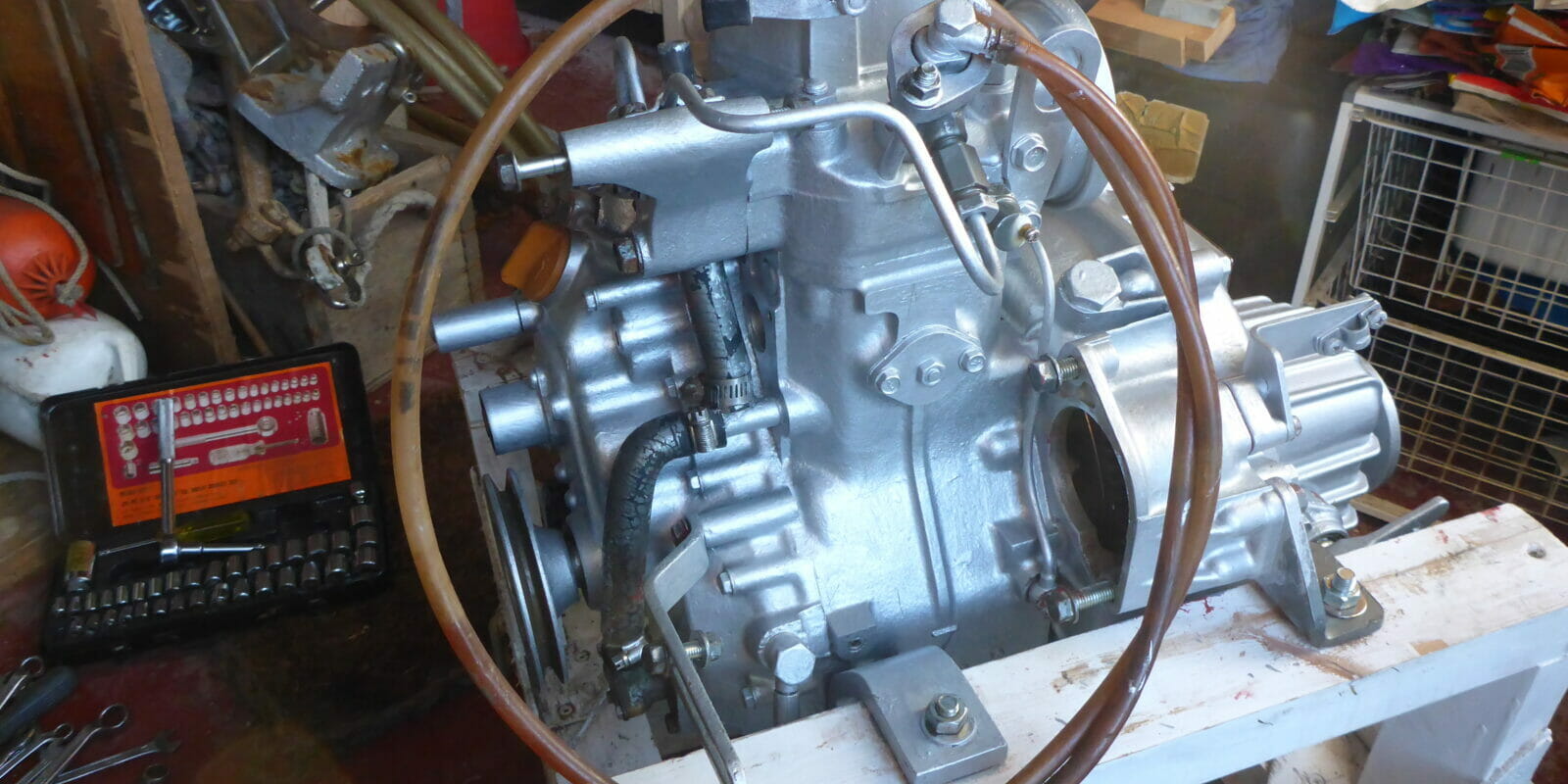Bluster’s engine was winterised, but otherwise in reasonable working order. It was badly rusted in places, the fuel and oil pipes were beginning to rust, and the paint was peeling off much of the lower half, so it needed a partial strip-down, clean up and repaint. Most of the bits that could be removed without breaking gasket seals unnecessarily were removed and painted separately. The engine was then wire brushed, degreased with Gunk, and then given two coats of Hammerite with an additional undercoat on the alloy parts. This is not a high temperature paint, so may peel near the cylinder, but we shall see.
The engine was given a full service with an oil and oil filter change, primary and secondary fuel filter changes and zinc anode change. The water pump, which was leaking water badly along the spindle was rebuilt with new seals, as was the spare water pump. The exhaust manifold was also changed as there were corrosion holes from the water jacket to the exhaust pipe. The electrics were ok apart from some of the control cables to the instrument panel which had chafed through the insulation and broken some strands of copper wire. These were bypassed by soldering in short sections of new wire.
The engine was then reassembled and the fuel lines were bled to remove the air. I tried starting the engine by hand without the electrics connected, but in needs a heavier flywheel for this, or a tame gorilla. Consequently, the battery and instrument panel were connected; it then started at the first push of the button. Having convinced myself that all was ok, I put it back to bed for the rest of the winter.
This work was carried out under cover in a shed, but the temperature varied between about -6 and +1 degrees Celsius. Painting at this temperature was not ideal, but I was able to slightly warm the engine before and after painting with a tube heater under it and a box and blanket over it, however, when these were removed everything cooled down again very quickly.
When it goes back into Bluster it will have four new rubber mounts as these were falling apart.


My 1 Gm10 did sterling service , motor sailing across and back over the North Sea , the Channel, Western Approaches . . . UNTIL . . .
slamming her astern to come out of a marina berth and ensuring sufficient flow past my long keeler so she would turn, refused to gain power forward when required, smashed into the stern of a wooden Eventide.
If it was GRP I’d have been okay, but you can’t get away with the cracking sound of wood and wood dust flying into the air !
Nearly happened again, until the engineer told me the hydraulic cones in the gearbox needed adjusting.
Yours, Jonathan, clearly now in excellent order – perhaps I should have exercised the same level of care .
Jonathan
-6 to +1 makes me feel like a wimp ….
Engine bays are such damp places it is hard to keep the engine looking pristine for very long but your preparation and treatment looks to be giving it an excellent chance. The 1GM in Helene looked fantastic in Ferguson tractor paint (although maybe not as good as yours) when it went back in but less so now 🙁
Cheers
Nick